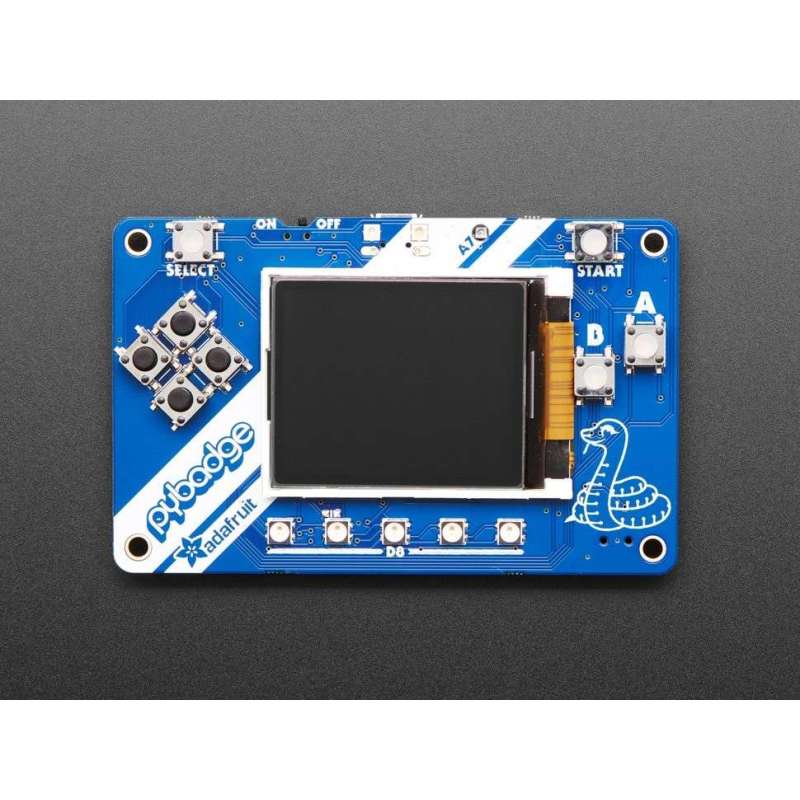





RLX COMPONENTS s.r.o. , Electronic Components Distributor.
RLX COMPONENTS s.r.o. , Electronic Components Distributor.
Adafruit PyBadge for MakeCode Arcade, CircuitPython or Arduino PRODUCT (AF-4200)
What's the size of a credit card and can run CircuitPython, MakeCode Arcade or Arduino? That's right, its the Adafruit PyBadge! We wanted to see how much we could cram into a 3 3⁄8 × 2 1⁄8 inch rounded rectangle, to make an all-in-one dev board with a lot of possibilities, and this is what we came up with.
The PyBadge is a compact board, like we said, it's credit card sized. It's powered by our favorite chip, the ATSAMD51, with 512KB of flash and 192KB of RAM. We add 2 MB of QSPI flash for file storage, handy for images, fonts, sounds, or game assets.
On the front you get a 1.8" 160x128 color TFT display with dimmable backlight - we have fast DMA support for drawing so updates are incredibly fast. There's also 8 silicone-top buttons, they are clicky but have a soft button top so they're nice and grippy. The buttons are arranged to mimic a gaming handheld, with a d-pad, 2 menu-select buttons and 2 fire-action buttons. There's also 5 NeoPixel LEDs to dazzle or track activity.
On the back we have a full Feather-compatible header socket set, so you can plug in any FeatherWing to expand the capabilities of the PyBadge. There's also 3 STEMMA connectors - two 3-pin with ADC/PWM capability and one 4-pin that connects to I2C - you can use this for Grove sensors as well.
For built in sensors, there's a light sensor that points out the front, and a 3-axis accelerometer that can detect taps and free-fall. To make bleeps and bloops, there's a built in buzzer-speaker. For projects where you need more volume, you can plug in one of our 8 ohm speakers.
You can power the PyBadge from any of our LiPoly batteries, but we like this 400mAh one. An on-off switch will save battery power when not in use. Or power from the Micro USB port - it will also charge up the battery if one is attached.
Now, how to program it? Well you've got a lot of options!
Here's a list of everything you get